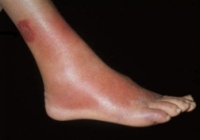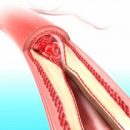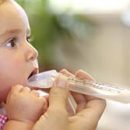Infectious skin diseases in children arise not only when penetrating the pathogen into a children's body through skin. Very often infectious skin diseases in children arise in connection with endogenous violations in the body of the kid. The article discusses these issues.
Content
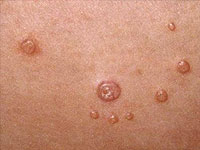 Infectious skin diseases in children are represented by a large group of pyodermia, the main sign of which is the suppuration of the skin. Skin infections in most cases are familiar to all streptococci and staphylococci. A certain role in the development of pyodermia is given to endogenous disorders occurring in the body of the baby, blood diseases, diabetes, deviations in vitamin and mineral exchange, intestinal disorders, excess body, liver diseases, polyneuropathy. Conducting factors are considered small injuries of skin, sculptures, supercooling, or, on the contrary, overheating, non-compliance with hygiene norms and rules, defective nutrition. In addition, long-term therapy with cytostatic drugs and glucocorticoids also predisposes skin-cleaning to infection.
Infectious skin diseases in children are represented by a large group of pyodermia, the main sign of which is the suppuration of the skin. Skin infections in most cases are familiar to all streptococci and staphylococci. A certain role in the development of pyodermia is given to endogenous disorders occurring in the body of the baby, blood diseases, diabetes, deviations in vitamin and mineral exchange, intestinal disorders, excess body, liver diseases, polyneuropathy. Conducting factors are considered small injuries of skin, sculptures, supercooling, or, on the contrary, overheating, non-compliance with hygiene norms and rules, defective nutrition. In addition, long-term therapy with cytostatic drugs and glucocorticoids also predisposes skin-cleaning to infection.
According to the etiological principle, infectious skin diseases in children are divided into stafilodermia and streptodermia, they are superficial and deep.
Main clinical types of stafilodermia
- Ostiopollyculite — is a damage to the mouth of the hair follicle when a small gunnock appears above the hairy, and on the periphery — Circular riming redness. Under the progression of the pathological process, the inflammatory focus is distributed increasingly and develops the following stage of the disease — Follyculite.
- Follyculite — It is characterized by the appearance around the hair follicle the zones of infiltration in the form of a compacted nodule. Folliculites can be single and multiple, usually located on the body of the kid, where there is a growing gun hair. Gradually, a dense crust is formed on the surface of the follicle, with the disappearance of which a pink-blue spot is formed, which over time passes.
- Staphylococcal sicosis — manifests itself multiple, on the skin of the chin and the upper lip of the child, foci of folliculitis and ostiophollyculite at various stages of development. The disease tends to long and recurrent flow.
- The epidemic bubble of newborns is a highly affected skin disease, affecting the kids in the first 5-7 days from the moment of birth. Almost on the entire surface of the skin, with the exception of palms and stop, numerous bubbles of various sizes are formed, with transparent turbid liquid content. They are prone to drying with the formation of thin crusts that can again merge with each other, leading to the development of extensive erosioned surfaces, in severe cases affecting all the skin, the so-called exfoliative ritter dermatitis.
Among infectious skin diseases in children should consider a group of diseases caused by pathogenic streptococcus. The main morphological element of pyodermia is considered Flicten — A peculiar cavity in the surface layer of the epidermis with a thin and flabby shell. It is usually filled with purulent-serous contents and is not associated with hair follicles. The main varieties of the disease are presented as follows.
-
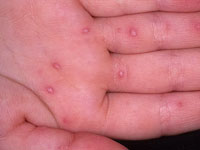 Streptococcal impetigo manifests itself by the formation of numerous flicen with a peeper redness of the periphery, most often on the skin's seats and in the corners of the mouth. Often there is a break of cavities with the formation of erosioned surfaces and abundant separated. Over time, the surface of erosion dries, then yellow-gray crusts appear. The baby worries the light itching and burning, while the general condition is not disturbed. Upon the addition of staphylococcus, purulent pustules are formed, affecting extensive skin areas complicated by the formation of folliculites, boils and lymphadenites.
Streptococcal impetigo manifests itself by the formation of numerous flicen with a peeper redness of the periphery, most often on the skin's seats and in the corners of the mouth. Often there is a break of cavities with the formation of erosioned surfaces and abundant separated. Over time, the surface of erosion dries, then yellow-gray crusts appear. The baby worries the light itching and burning, while the general condition is not disturbed. Upon the addition of staphylococcus, purulent pustules are formed, affecting extensive skin areas complicated by the formation of folliculites, boils and lymphadenites. - Bullese impetigo — It is the most severe version of streptococcal impetigo, in which large stress bubbles are developing with a serous-bloody content and thick coat. Leather over fluxes is sealed and inflamed, secondary changes in local lymph nodes can be connected.
- Vulgar Ektima — is a deep form of infectious diseases of the skin in children with the development of purulent cavities in the inner layer of the dermis.



